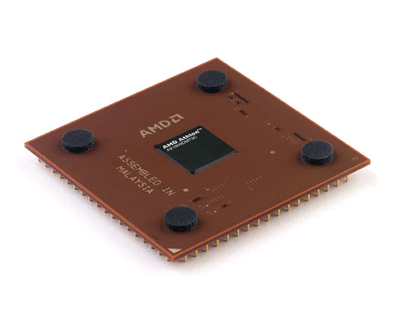Introduction

So at this stage AMD are losing to Intel, but this was all to change and AMD did manage to turn it around in a rather drastic way. They first of all launched the "Classic" Athlon which was based on the Slot A interface. This CPU was loved by all since it was cheap and the performance, well that was just mind blowing. Many people decided to avoid the P3 route and go for the AMD alternative. Obviously this involved a new motherboard/CPU combo. But people were prepared to make the investment.
This platform matured quickly, and with this came a series of high performance chipsets with VIA taking the initiative and supplying the market with a range of chipsets to match the new processor from AMD.
They had the advantage that computer geeks loved the system and were more than happy to change to it. But they needed to get some big OEMs behind them and get the corporations to adopt the new systems - this was something a lot more difficult to change.
After coming to a head with the Classic Athlon running at 1Ghz, they made a form factor switch which is still in use today. Like Intel, the slot design was abandoned in favour of the socket and Socket A/462 was born.
With the Socket A solution maturing and with the CPU's getting faster and craving memory bandwidth, we eventually saw the introduction of DDR systems. This stands for Double Data Rate, for all of you whom have been in a hole for the past 6 months DDR is the following; basically normal memory reads on the peaks of the clock signal, with DDR it reads on the peaks and the troughs, effectively doubling the original work per clock.
This brings us nicely to where we are now. AMD has released the Athlon 4 core revision, a step up from Thunderbird and a new range of CPU's to match. We now have Athlon MP, the new Duron range using the Morgan core (based on Athlon 4) and now the Athlon XP which we take a look at today.









